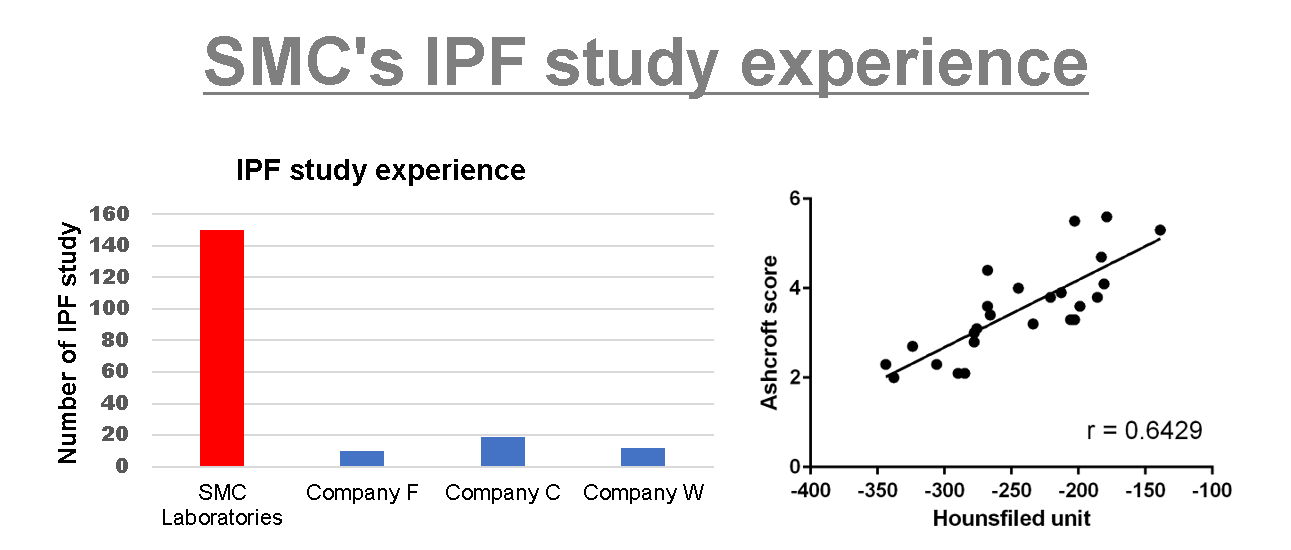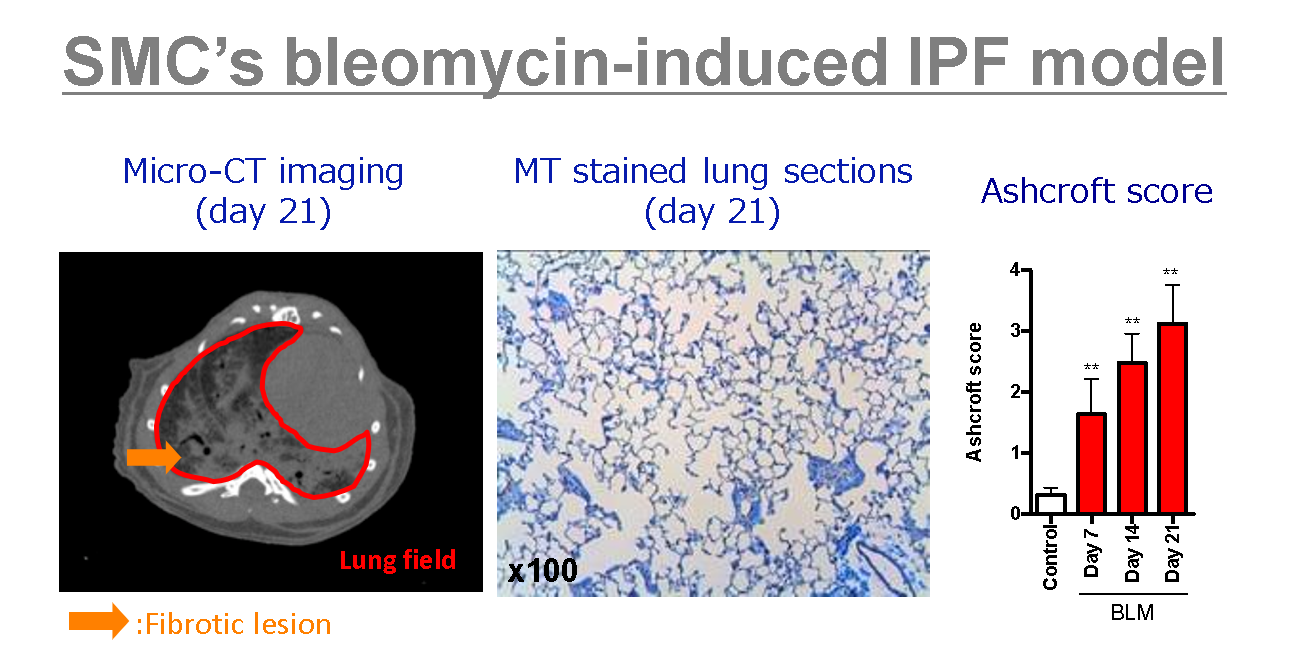SMC’s IPF study experience
Today, we would like to introduce our experience of the bleomycin-induced IPF study.
One of our most requested models, apart from our proprietary MASH model, is the bleomycin-induced IPF model for evaluations of drugs against lung fibrosis.
In the past 10 years, we have conducted over 150 studies using the bleomycin-induced IPF model and testing drug candidates with a variety of MoAs and targeting a number of different pathways. Through these studies, we gained the experience and knowledge to create correlation charts by using historical data of the Ashcroft score and lung CT scans. Based on these charts, we have the capability to optimize your study design and provide data backed consultations.

In addition to the analysis of histological images and the BALF, we can monitor the fibrosis development through CT scan during the in-life part of the study. CT scans of the lungs of patients is a common practice to diagnose and monitor the fibrosis progression. Therefore, utilizing this method during the preclinical evaluation, can produce stronger data for transitioning into the clinical phase.

– Sampling scheme allowing all analyses in a single mouse
(histology, gene expression, biochemistry and BALF analysis)
– Optimized for evaluation of fibrosis severity, body weight loss and mortality
– Increased reproducibility and uniform phenotype by using the Microsprayer for disease induction
– Expert histological evaluation based on over 10 years of experience
– In-life evaluation of fibrotic lesions by CT scan similar to clinical studies
– Availability of positive controls: Nintedanib (therapeutic) and Dexamethasone (preventive)
If you would like to see some of our historical data or receive further information about the bleomycin-induced IPF model, please feel free to contact us.
